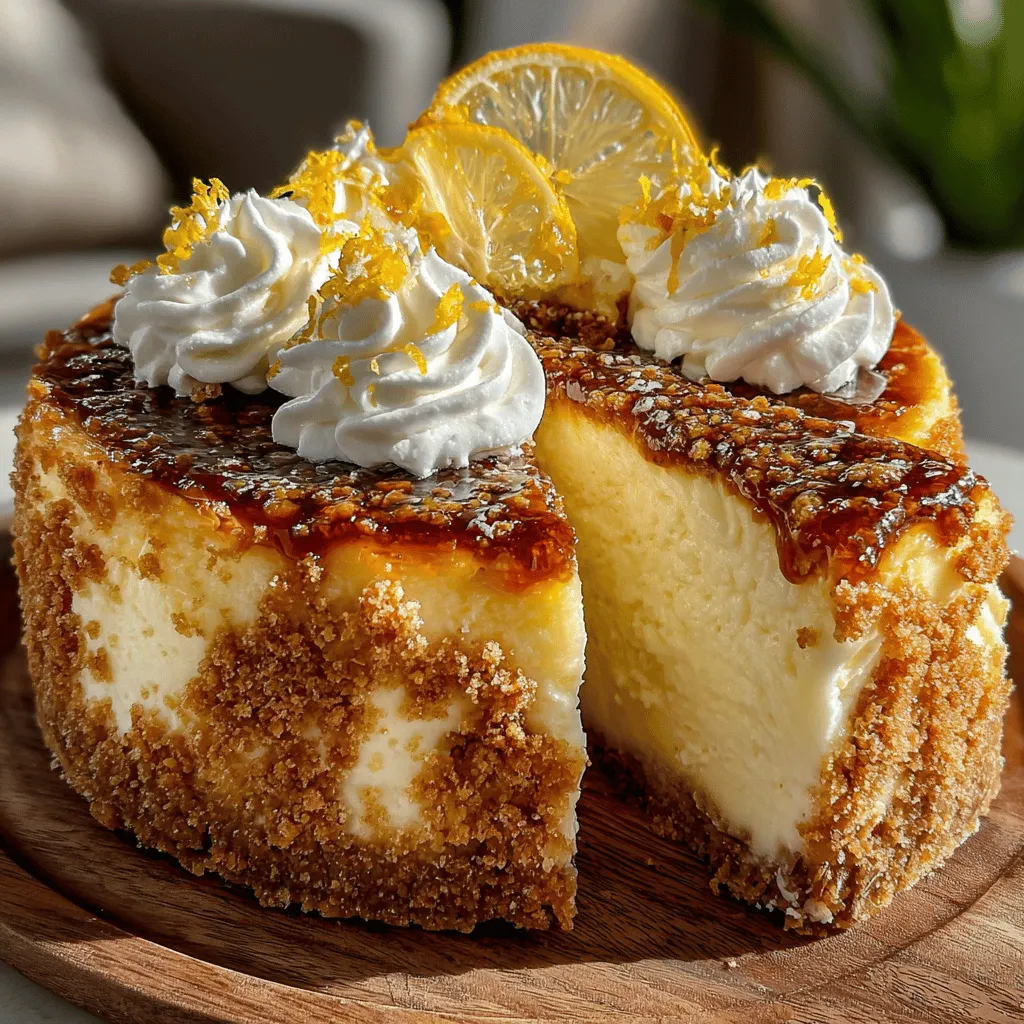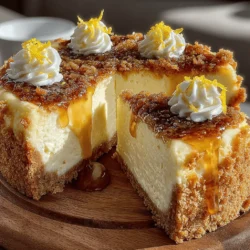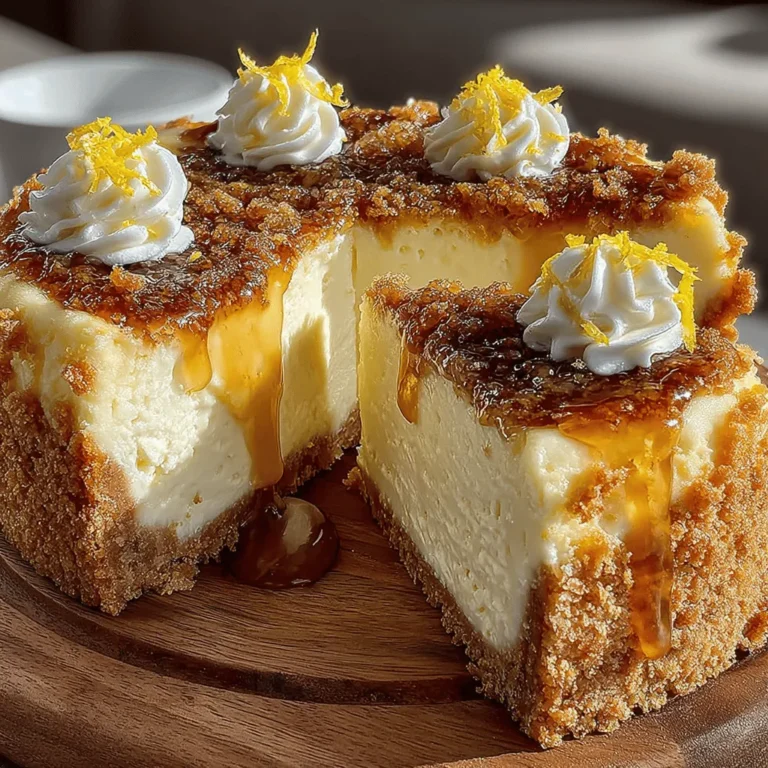New York cheesecake is a beloved dessert that has captured the hearts of many connoisseurs and casual dessert lovers alike. Renowned for its rich and creamy texture, this cheesecake stands out due to its dense yet velvety consistency, which is often attributed to its unique combination of ingredients. Unlike lighter cheesecakes, New York cheesecake is indulgent and satisfying, making it a perfect centerpiece for any gathering or special occasion. In this article, we will delve into the nuances that make New York cheesecake special, explore its key ingredients, and guide you through the initial steps to create your own creamy, dreamy version of this classic dessert.
What Makes New York Cheesecake Unique?
At its core, New York cheesecake is defined by its dense, creamy filling, which results from a carefully crafted blend of cream cheese, eggs, and other essential ingredients. The texture is smooth and rich, offering a luxurious mouthfeel that distinguishes it from other varieties of cheesecake. This iconic dessert is typically baked in a springform pan, allowing for easy removal and presentation.
The flavor profile of New York cheesecake is equally important. It strikes a perfect balance between sweetness and tanginess, thanks to the inclusion of sour cream and a hint of lemon juice. This combination not only enhances the taste but also adds to the overall depth of flavor, making each bite a delightful experience.
In this post, our objective is to provide you with a detailed recipe to create a creamy, dreamy New York cheesecake that is sure to impress your friends and family. We will break down the essential ingredients, offer a step-by-step guide for crafting the perfect crust, and walk you through the process of creating the luscious filling.
Understanding the Ingredients
A successful New York cheesecake hinges on the quality and harmony of its ingredients. Let’s take a closer look at each key component and its role in creating the perfect cheesecake.
Graham Cracker Crust
The foundation of any great cheesecake is its crust, and for New York cheesecake, the graham cracker crust is a classic choice. The combination of crushed graham crackers, sugar, and melted butter creates a flavorful and crunchy base that contrasts beautifully with the smooth filling. The slight sweetness of the graham crackers complements the richness of the cheesecake, making it an essential part of the overall flavor experience.
Cream Cheese
As the heart of the cheesecake, cream cheese is what gives New York cheesecake its signature richness. The cream cheese should be softened to room temperature before use, ensuring that it blends smoothly without lumps. This ingredient is crucial for achieving the desired creamy texture, and using high-quality cream cheese will elevate the overall taste of your cheesecake.
Sugar
Sugar is not just a sweetener; it plays a vital role in balancing the flavors of the cheesecake. It enhances the natural sweetness of the cream cheese while also helping to stabilize the filling as it bakes. For the best results, granulated sugar is commonly used, but you can also experiment with alternatives like brown sugar for a deeper flavor.
Vanilla Extract
Vanilla extract is a flavor enhancer that elevates the overall taste of the cheesecake. A splash of pure vanilla extract adds a fragrant aroma and depth, making the cheesecake more inviting. For an even richer flavor, consider using vanilla bean paste or scraping the seeds from a vanilla pod.
Eggs
Eggs serve as the binding agents in the cheesecake filling, providing structure and stability. When beaten and blended with the other ingredients, eggs contribute to the cheesecake’s creamy texture. It’s important to use large eggs at room temperature for optimal integration with the other components.
Sour Cream
Sour cream is a key ingredient that adds creaminess and a tangy flavor to the cheesecake. Its acidity helps balance the richness of the cream cheese, creating a harmonious flavor profile. Additionally, sour cream enhances the texture, making the cheesecake even more decadent.
All-Purpose Flour
While not always included in every cheesecake recipe, all-purpose flour can help stabilize the filling, preventing it from cracking as it bakes. It contributes to the overall structure of the cheesecake, ensuring it holds its shape once cooled.
Lemon Juice
A splash of fresh lemon juice brightens the flavor profile of the cheesecake, adding a refreshing contrast to its richness. The acidity from the lemon juice not only enhances the taste but also helps to balance the sweetness, making each bite well-rounded.
Salt
Salt is a crucial yet often overlooked ingredient in baking. In the context of cheesecake, a pinch of salt enhances the sweetness and rounds out the flavors, allowing the other ingredients to shine. It’s a small addition that makes a significant difference.
Preparing the Perfect Cheesecake Crust
A well-made crust is essential for a successful New York cheesecake. It provides a flavorful base and a delightful crunch that complements the creamy filling. Here’s a step-by-step guide to making the graham cracker crust:
Step 1: Gather Your Ingredients
You will need the following ingredients for the graham cracker crust:
– 1 ½ cups of graham cracker crumbs
– ⅓ cup of granulated sugar
– ½ cup of unsalted butter, melted
Step 2: Combine the Ingredients
In a medium mixing bowl, combine the graham cracker crumbs and granulated sugar. Mix them together until they are evenly distributed. Next, pour the melted butter into the mixture and stir until all the crumbs are coated and the mixture resembles wet sand.
Step 3: Press the Crust into the Pan
To create a sturdy crust, transfer the crumb mixture into a 9-inch springform pan. Use the back of a measuring cup or your fingers to press the mixture firmly into the bottom and up the sides of the pan. Ensure that the crust is even and well-packed to prevent it from crumbling when serving.
Step 4: Bake the Crust
Preheat your oven to 350°F (175°C). Once the oven is ready, place the springform pan with the crust in the oven and bake for about 8-10 minutes, or until the crust is lightly golden and fragrant. This step is crucial, as it helps set the crust and adds a delightful toasted flavor.
Step 5: Cool the Crust
Once baked, remove the crust from the oven and allow it to cool completely before adding the cheesecake filling. This cooling period is essential to prevent the filling from melting into a warm crust, which could compromise the texture of your cheesecake.
Creating the Creamy Filling
Now that your crust is prepared and cooled, it’s time to focus on creating the creamy filling that will make your New York cheesecake truly dreamy. Here’s how to achieve the perfect texture:
Step 1: Gather Your Ingredients
For the cheesecake filling, you will need:
– 4 (8-ounce) packages of cream cheese, softened to room temperature
– 1 cup of granulated sugar
– 1 teaspoon of vanilla extract
– 4 large eggs, at room temperature
– 1 cup of sour cream
– 2 tablespoons of all-purpose flour
– 1 tablespoon of fresh lemon juice
– A pinch of salt
Step 2: Beat the Cream Cheese
In a large mixing bowl, use an electric mixer to beat the softened cream cheese on medium speed until it is smooth and creamy, about 2-3 minutes. Make sure to scrape down the sides of the bowl to ensure that all the cream cheese is incorporated and free of lumps.
Step 3: Add Sugar and Vanilla
Once the cream cheese is smooth, gradually add the granulated sugar and continue to beat until well combined. This process should take about 1-2 minutes. Add the vanilla extract and mix until fully integrated.
Step 4: Incorporate the Eggs
Next, add the eggs one at a time, mixing on low speed after each addition just until combined. Be careful not to overmix, as incorporating too much air can lead to cracks in the cheesecake during baking.
Step 5: Add Sour Cream and Other Ingredients
With the eggs incorporated, add the sour cream, all-purpose flour, lemon juice, and a pinch of salt to the bowl. Mix on low speed until everything is well combined and the filling is smooth. Take care to scrape down the sides of the bowl again to ensure a uniform mixture.
By following these steps, you will create a luxurious and creamy filling that is the hallmark of an exceptional New York cheesecake. In the following sections, we will explore how to assemble and bake your cheesecake to perfection.

Incorporating Sugar Gradually
To achieve the perfect creamy texture in your New York cheesecake, it’s crucial to incorporate the sugar gradually. Start with cream cheese at room temperature in your mixing bowl. Gradually add granulated sugar while mixing on low speed. This method ensures that the sugar is well-distributed throughout the cream cheese, preventing any graininess in the final product. It allows the sugar to dissolve fully, contributing to a smoother filling. Remember, patience is key during this step; taking your time will yield a velvety cheesecake.
The Significance of Adding Eggs One at a Time
Eggs are essential for binding the ingredients and providing that classic cheesecake structure. However, the order in which you add them is equally important. Add the eggs one at a time, mixing gently after each addition. This method ensures that each egg is fully incorporated before adding the next, resulting in a unified mixture without overmixing. Overmixing can lead to excess air being incorporated, which may cause your cheesecake to rise too much during baking and then crack as it cools.
Tips for Avoiding Overmixing to Maintain Fluffiness
While a creamy texture is desirable, overmixing can lead to a dense cheesecake rather than the light and fluffy treat you desire. To avoid this, use a paddle attachment if you’re using a stand mixer, and mix on low speed. Alternatively, you can use a hand mixer or even mix by hand with a spatula, which gives you more control over the mixing process. Stop mixing as soon as the ingredients are combined and smooth. Remember, a few small lumps are perfectly fine and will result in a better texture once baked.
Incorporating Additional Ingredients
Importance of Each Additional Ingredient in the Filling
Each additional ingredient in your cheesecake filling serves a specific purpose, enhancing flavor and texture. Understanding these roles will help you achieve a cheesecake that’s not only delicious but also has the perfect consistency.
Adding Sour Cream for Richness
Sour cream is a fantastic addition to any cheesecake filling. It adds a rich, creamy texture and a subtle tanginess that balances the sweetness of the sugar. Not only does sour cream enhance the flavor profile, but it also contributes to the overall creaminess of the filling, ensuring that every bite melts in your mouth.
The Role of Flour in Texture Stability
Flour may seem like an unusual ingredient in a cheesecake, but it plays a vital role in stabilizing the filling. It helps absorb moisture, which prevents the cheesecake from becoming too wet. The result is a sturdier structure that holds up well when sliced. Just a small amount of all-purpose flour will suffice; too much can lead to a cakey texture rather than the desired creamy consistency.
How Lemon Juice Contributes to Flavor Depth
Lemon juice is a vital ingredient that adds brightness and depth to the flavor of your cheesecake. It cuts through the richness of the cream cheese and sour cream, adding a refreshing zest that elevates the overall taste. Additionally, the acidity in lemon juice helps balance the sweetness, ensuring that each bite is perfectly harmonious.
The Effect of Salt on Overall Taste Balance
A pinch of salt is often overlooked in dessert recipes, but it plays a crucial role in enhancing the flavors of your cheesecake. Salt rounds out the sweetness and accentuates the other flavors in the filling. It also helps to balance the richness of the cream cheese and sour cream, making each bite more enjoyable.
Baking the Cheesecake to Perfection
Ideal Baking Conditions (Temperature and Time)
The baking process is critical to achieving a perfect New York cheesecake. Preheat your oven to 325°F (160°C) and bake your cheesecake for about 60 to 70 minutes. The low temperature allows the cheesecake to cook evenly without browning too much. If you’re using a water bath (which is recommended for preventing cracks), be sure to wrap your springform pan in aluminum foil to prevent any water from seeping in.
Signs of a Perfectly Baked Cheesecake
A perfectly baked cheesecake should have a slightly puffed surface and a smooth, even color. The edges should be set while the center remains slightly jiggly. This jiggle is a sign that the cheesecake is done but still has a creamy texture. Avoid over-baking, as this can lead to a dry and crumbly cheesecake.
Understanding the Jiggle Test
The jiggle test is a simple yet effective way to check if your cheesecake is done baking. Gently shake the pan; if the center wobbles slightly while the edges appear firm, you’ve achieved the perfect bake. Remember, the cheesecake will continue to set as it cools, so it’s better to under-bake slightly than to over-bake.
Importance of Cooling in the Oven
After baking, it’s crucial to let your cheesecake cool in the oven with the door slightly ajar for about an hour. This gradual cooling process helps prevent the cheesecake from cracking due to sudden temperature changes. The cheesecake will continue to firm up during this time, enhancing its texture.
How This Prevents Cracking and Enhances Texture
Cooling the cheesecake slowly in the oven minimizes the chances of it cracking. A sudden drop in temperature can cause the cheesecake to shrink, leading to unsightly cracks on the surface. Additionally, this gentle cooling helps the cheesecake retain a creamy texture, making it more enjoyable to eat.
Chilling for the Best Flavor and Texture
Why Chilling is Essential for Cheesecake
Chilling your cheesecake is a crucial final step that allows the flavors to meld and the texture to firm up. Cheesecake is best enjoyed cold, and proper chilling ensures that it holds its shape when sliced. It also enhances the overall flavor, making the cheesecake even more delectable.
Recommended Chilling Time and Its Effects on Flavor Development
For best results, refrigerate your cheesecake for at least 4 hours, but overnight is ideal. The longer it chills, the more pronounced the flavors become. This resting time allows the ingredients to settle, resulting in a richer taste and a firmer texture.
Best Practices for Refrigerating Cheesecake
When refrigerating your cheesecake, it’s essential to cover it to prevent it from absorbing any odors from the fridge. Use plastic wrap or aluminum foil, or store it in an airtight container. If you’ve added any toppings, consider adding them just before serving to maintain their freshness and texture.
Serving Suggestions
How to Properly Release the Cheesecake from the Pan
Once your cheesecake has chilled and is ready to serve, it’s time to release it from the springform pan. Run a thin knife around the edges of the pan to loosen the cheesecake before unclipping the sides. This method helps prevent any sticking and ensures a clean release, making for a beautiful presentation.
Presentation Ideas: Serving Plain vs. with Toppings
A New York cheesecake is a stunning dessert on its own, but you can elevate its presentation with various toppings. For a classic look, serve it plain, showcasing its creamy texture and rich flavor. If you desire a twist, consider adding a layer of whipped cream, fresh berries, or a drizzle of chocolate or caramel sauce. Each topping adds a new dimension of flavor and color, enhancing the overall experience.
Popular Fruit Toppings and Sauces to Complement the Cheesecake
Fruits such as strawberries, blueberries, or raspberries pair wonderfully with cheesecake, providing a refreshing contrast to its richness. You can serve them fresh, as a compote, or as a fruit sauce. For a touch of elegance, consider making a berry coulis by blending your favorite berries with sugar and a splash of lemon juice. This sauce can be drizzled on top of the cheesecake or served on the side for dipping.
Conclusion
In summary, crafting a successful New York cheesecake involves careful attention to detail, from the gradual incorporation of ingredients to the ideal baking and chilling methods. Each step contributes to the creamy, dreamy texture and rich flavor profile that makes this dessert a beloved classic.
We encourage you to try making this delightful cheesecake at home, experimenting with different toppings and flavors to create your unique twist on this traditional favorite. There’s a special joy in sharing homemade cheesecake with family and friends, making every slice a celebration of flavors and memories. So gather your ingredients, follow the steps outlined, and revel in the satisfaction of creating a dessert that is sure to impress. Happy baking!


